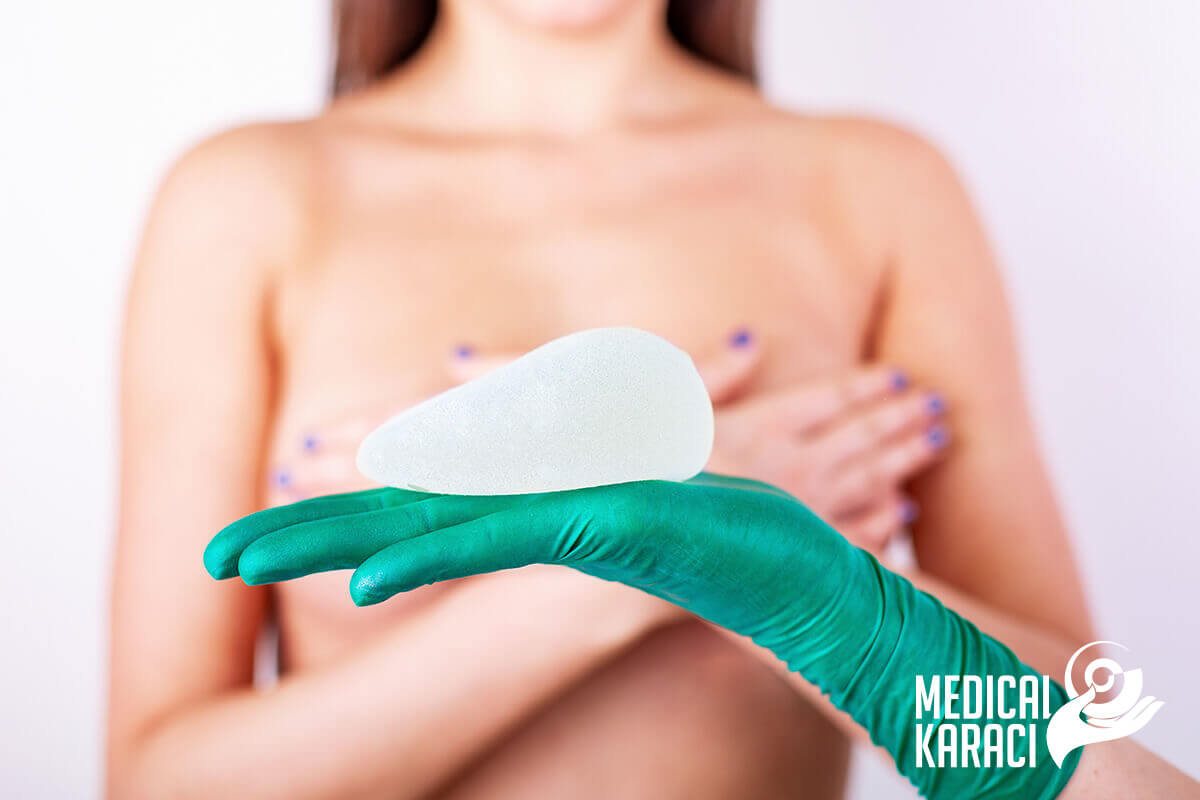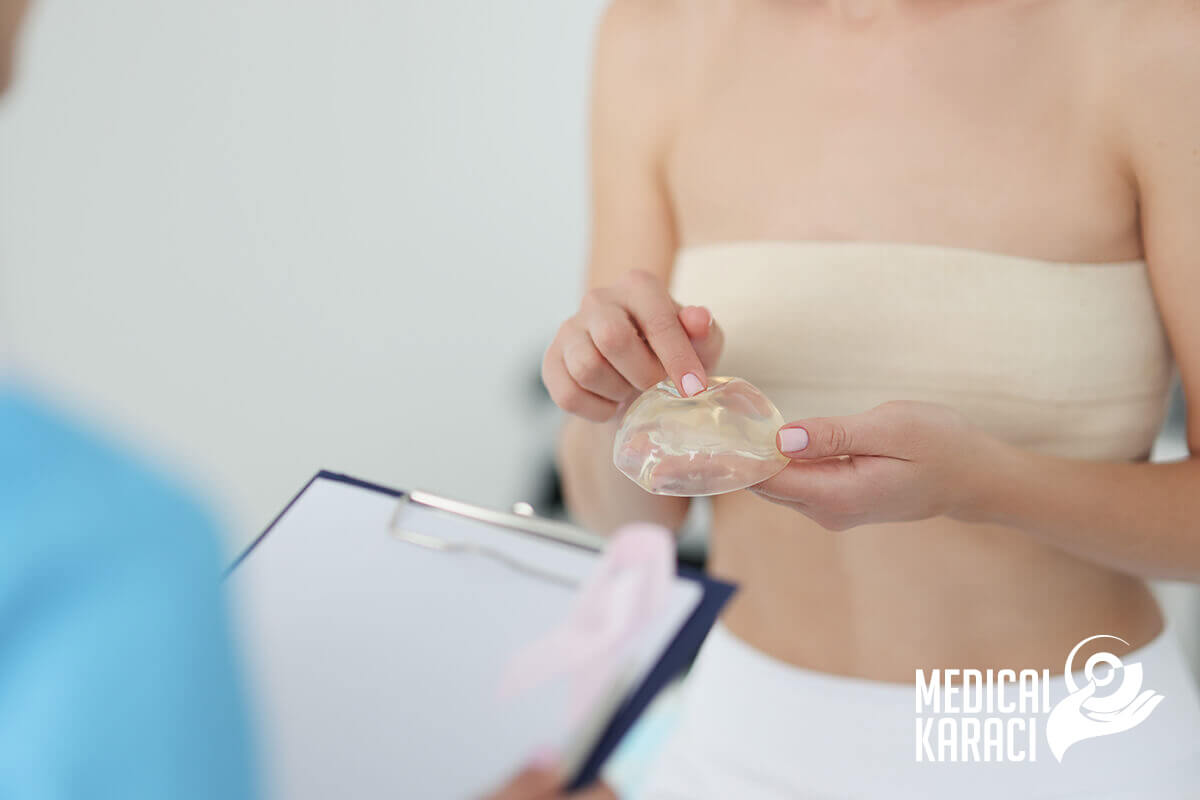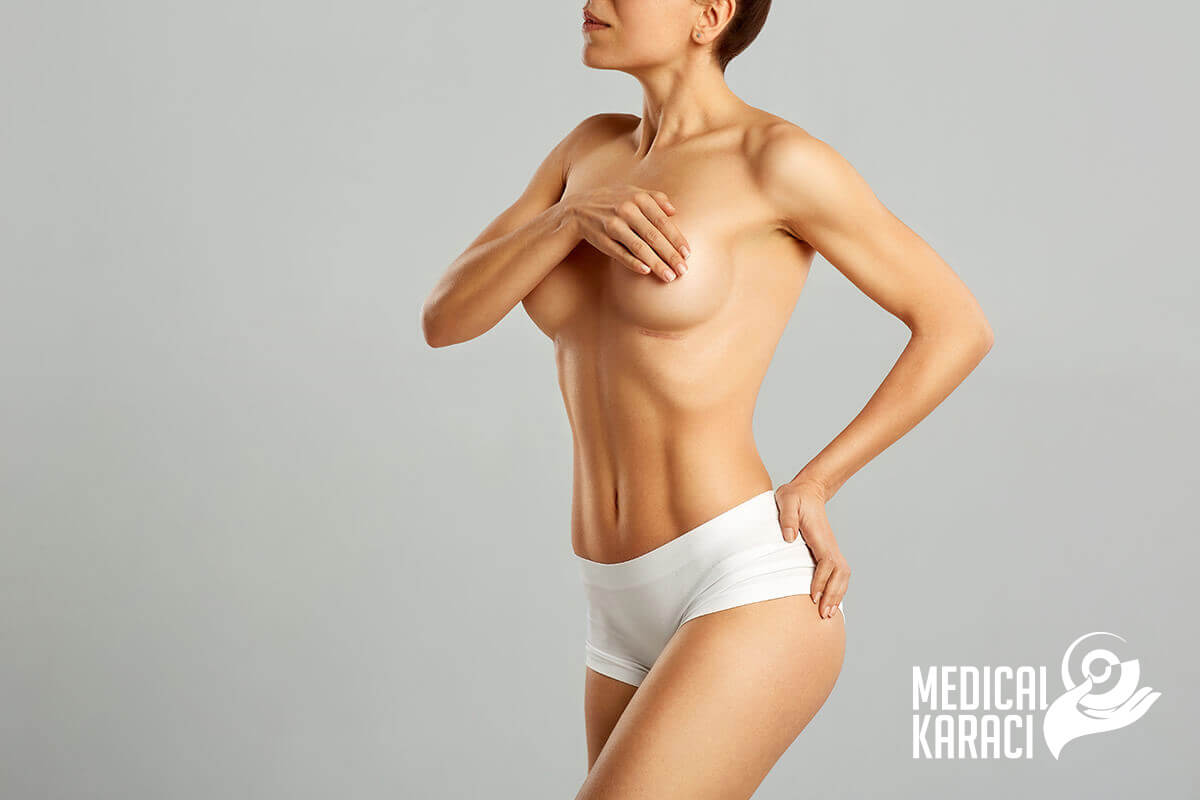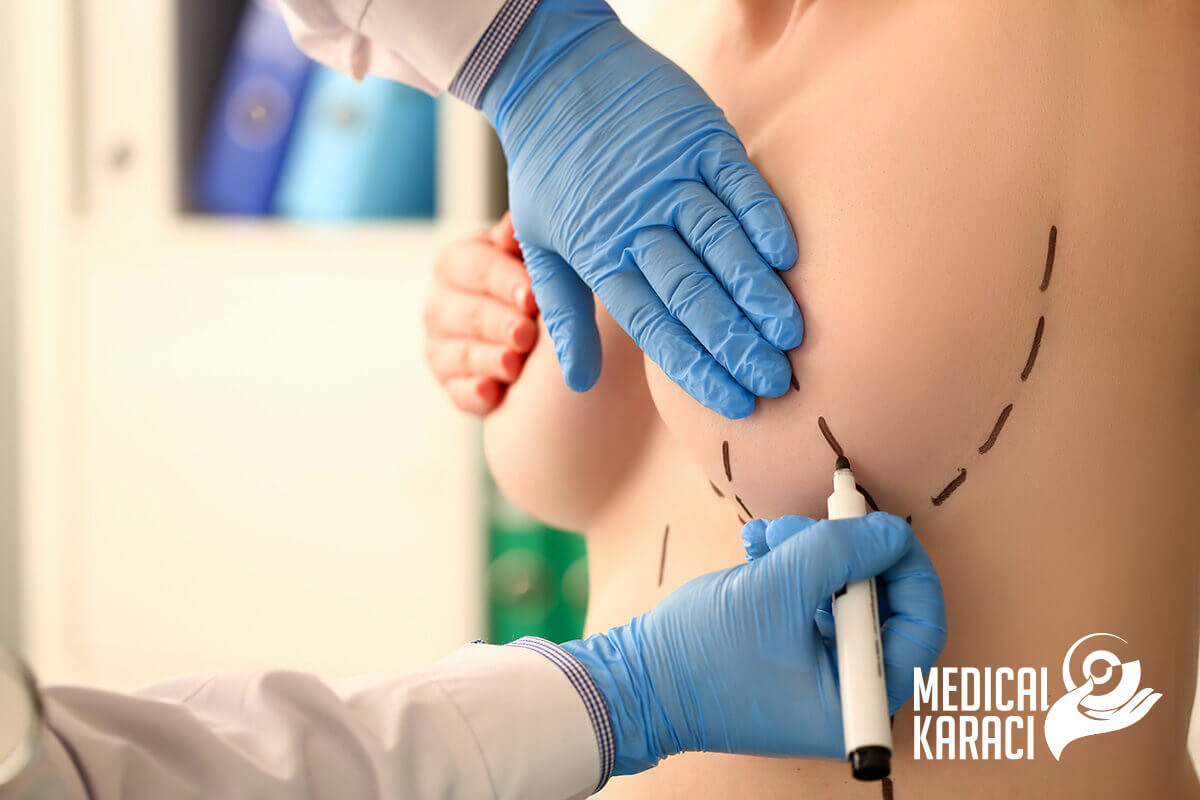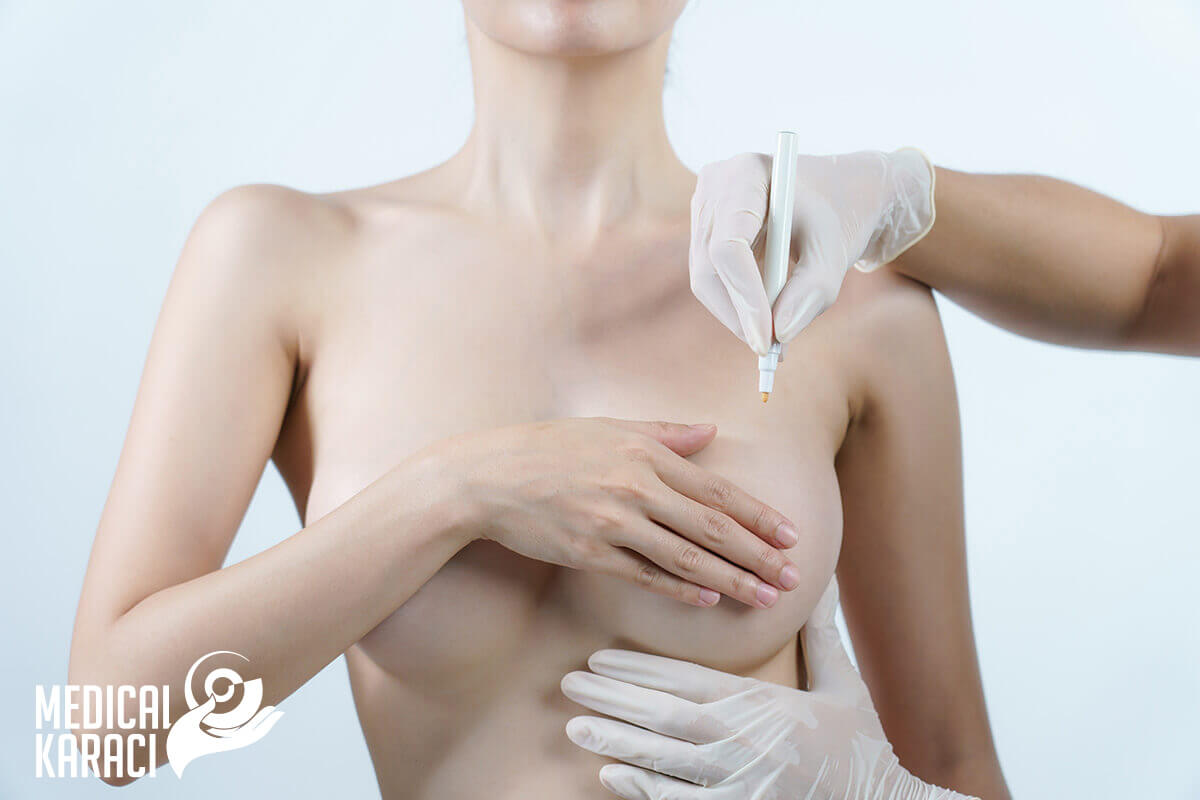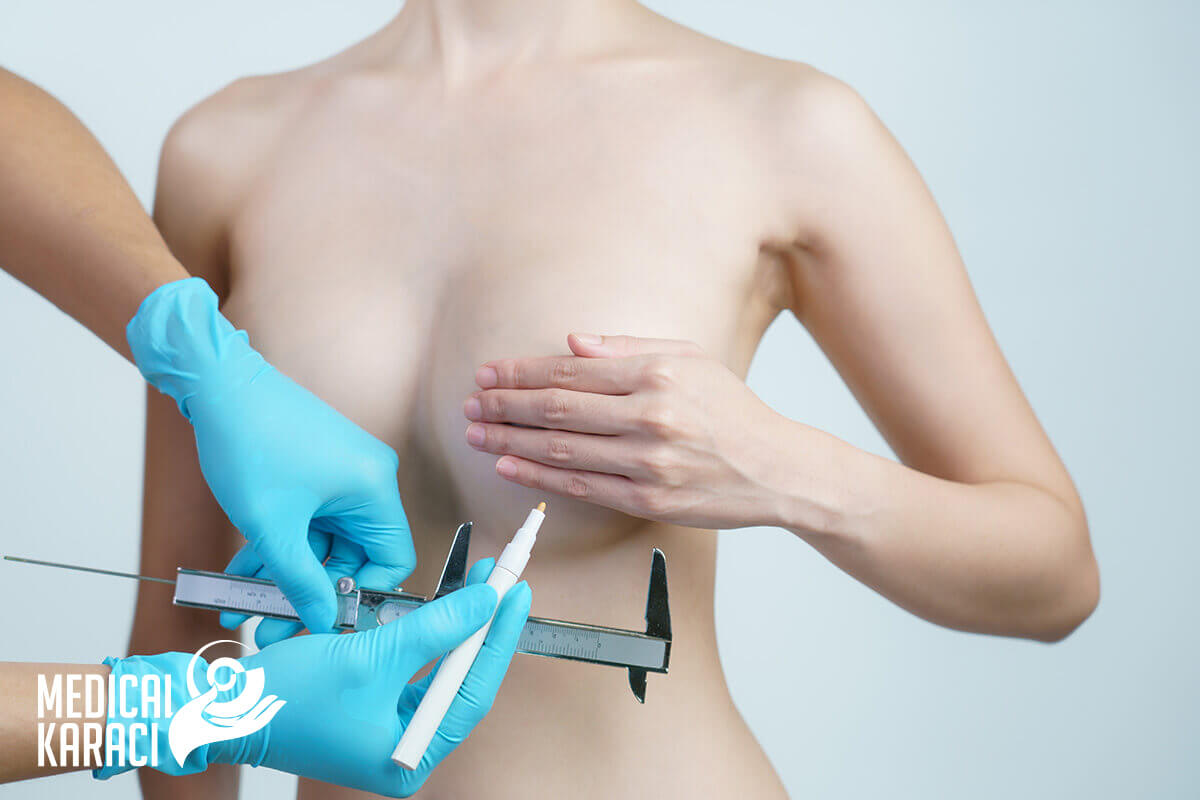Mammoplasty for breast enlargement
Female breast augmentation is one of the most popular and desired corrections in the field of plastic surgery. For many women, breast augmentation is a way to achieve a more harmonious body and boost their self-esteem.
What is mammoplasty for breast augmentation?
Breast augmentation mammoplasty is a surgical procedure that aims to increase the size, shape or fullness of the breasts.
Mammoplasty for breast augmentation is done for:
- Increasing the size of breasts that are naturally small
- Restore breast size and shape after pregnancy, breastfeeding or weight loss.
- Restoration of symmetry when breasts are asymmetrical
However, breast sagging cannot be corrected by this procedure. When a woman wishes to improve the position and shape of sagging breasts at the same time as changing the size, mammoplasty can be combined with a breast lift procedure.
The procedure can be applied to women of different ages. However, it is recommended that the breasts are fully developed when undergoing such surgery.
Breast enlargement does not affect the ability to breastfeed after future pregnancy and childbirth.
Breast augmentation mammoplasty involves placing breast implants under the breast tissue or pectoral muscles.
What are breast implants?
A breast implant is a medical prosthesis that is placed inside the breast to augment, reconstruct, or create the physical shape of the breast.
There are three main types of breast implants:
- Saline implants - these are filled with a sterile saline solution, similar to salt water. The solution is contained in a silicone sheath of elastomer. These implants can be filled with varying amounts of saline. This affects the feel, firmness and shape of the breast. If the saline implant ruptures, the solution will be absorbed and expelled from the body naturally.
- Silicone gel implants - these consist of a silicone outer shell filled with silicone gel. If a silicone implant leaks, the gel will stay in the shell or come out in the breast implant pocket. A leaking silicone implant may or may not rupture. Patients who choose this type of implant should have more regular checks on the condition of their implants with an MRI or ultrasound.
- Alternative implants - they can be filled with polypropylene, soybean oil or other material.
Your plastic surgeon will determine which of these options is most appropriate in your individual case.
Breast implants have a lifetime warranty on the implant device, but they are not actually designed to last a lifetime. It is recommended that both silicone and saline breast implants be replaced every 10 years or so.
Preparation for the operation
Before the mammoplasty surgery, the surgeon should help the patient choose the size of the implant needed. This can be done by inserting different sized implants into the bra to see how they feel to the patient.
In the case of breast augmentation surgery, admission to the hospital occurs on the day of surgery. It is necessary that you have not taken food and/or liquids in the last 6 hours. You must have the necessary tests which include: complete blood count, urinalysis, blood sugar, ECG, chest x-ray and consultation with specialists- anesthesiologist, cardiologist, internist and others as needed. Depending on the individual patient's condition, other tests may be necessary prior to the breast augmentation surgery itself.
The operation lasts about one hour. It is performed under general anaesthesia and after it the patient remains in the clinic for observation within one day.
How does the mammoplasty procedure work?
Cut options
The surgeon and patient should discuss the surgical incision options before surgery.
The following options are possible:
- Inframammary incision made in the crease under the breast
- Transaxillary incision, in the armpit
- Periareolar incision, around the nipple
The choice of incision depends on several factors, including how large the augmentation is, the patient's anatomy, the type of implant, and the surgeon's and patient's preferences.
Implant placement
The breast implant is placed in a pocket.
There are two types of placement:
- Submuscular location- passes under the pectoralis major muscle. With this placement, recovery may take longer and there may be more pain after surgery.
- Submammary or subglandular location- passes behind the breast tissue over the pectoralis major muscle.
Closure of incisions
The surgeon closes the incisions with multi-layer sutures or stitches in the breast tissue. The stitches, skin adhesives, and surgical tape close the skin and keep it closed.
The incision lines will be visible at first, but will fade with time.
Evaluation of mammoplasty results
The results of breast augmentation are immediately noticeable. The final effect occurs after a few weeks when the swelling goes down and the breast takes its final shape. Over the course of a year, the scars will continue to fade.
Recovery after mammoplasty
As the anesthesia wears off, the patient will receive pain medication to relieve the pain.
Absorbable or dissolvable sutures usually disappear within 6 weeks.
If the patient has stitches that do not dissolve, or if the drainage tubes are placed close to the chest, a follow-up visit will be necessary to remove them.
The medical team should provide you with the following information:
- How to care for the breasts after surgery
- How to use prescribed medicines
- When to come for a follow-up consultation
The patient should seek medical attention immediately if available:
- any signs of infection, such as fever or heat and redness in the chest area
- chest pain, abnormal heart arrhythmias or shortness of breath
The patient should not perform heavy physical activities for about 6 weeks.
The doctor can advise you on some post-operative exercises, such as flexing and extending your arms, to relieve pain and discomfort, as well as what type of bra to wear.
Risks and complications of mammoplasty
Every surgical procedure carries risks. Some of the complications associated with breast augmentation include:
- Sore breasts
- Infection
- Sensitivity in the breasts, nipples or both may change temporarily
- Rupture or leakage of the implant
- Bleeding
- Fluid accumulation
- Capsular contracture - refers to hardening of the area around the implant. It can disrupt the shape of the implant and cause pain.
- Scars can become red, dense and painful. Sometimes they need further surgery.
- The breast skin over the implant may wrinkle, especially in very thin women or those who suddenly lose a lot of weight.
- If the patient decides to remove the implants, her breasts may look less attractive than they did before the surgery. It is advisable to consult a plastic surgeon about possible implant replacement.
- If the implants rupture, removal surgery can mean loss of breast tissue.
Breast augmentation by lipofilling
Breast augmentation through lipofilling is an intervention during which the patient's own fat is injected into the areas to be remodeled.
Breast augmentation via autologous fat transfer is a suitable procedure for patients who desire:
- minor breast enlargement
- balancing asymmetrical breasts
- breast augmentation with natural filler
- improving the shape of the breasts without visible scars
Fat transfer breast augmentation is a safe procedure that does not cause allergies and offers natural results.
The procedure begins with liposuction. Incisions of 5 mm are made in the patient's donor areas - mainly the abdomen or thighs. A cannula is inserted, which first loosens and then removes localized fat deposits. The wounds are closed with resorbable sutures.
Liposuction is followed by filtering and washing the fat in saline. The isolated fat cells are then injected into the breast through small cannulas. The injection leaves no wounds or scars.
Depending on the extent of the desired augmentation, lipofilling may need to be performed more than once.
Risks
Risks for breast enlargement with fat transfer include:
- Brushes
- Infection
- Microcalcification
- Necrosis (death) of fat cells
- Possibility of some of the transferred fat cells leaving the breast area
Years ago, breast implants were seen as a way to get very dramatic and striking results. For most women today, the goal of breast augmentation is to increase breast volume and eliminate asymmetry, but to do so subtly and elegantly and achieve a beautiful and natural-looking result.
Choosing a board-certified plastic surgeon who knows the latest breast augmentation options, techniques, and trends is the first step to achieving the result you're looking for.
Mammoplasty for breast reduction and lifting
Having beautiful breasts does not always mean having bigger breasts. It's all about shape and proportion. By reducing volume in combination with a breast lift, a more lifted, firmer and aesthetically pleasing bust can be achieved.
What is mammoplasty for breast reduction and breast lift?
Breast reduction mammoplasty is a surgical procedure that reduces the size of large, heavy breasts, helping to create a more aesthetically pleasing breast contour. By removing excess breast tissue, fat and sagging, stretched skin, the plastic surgeon can not only make the breasts smaller, lighter and firmer, but also improve breast symmetry and eliminate sagging.
Why is it done?
If you have large breasts that are disproportionate to the rest of your body, you may consider undergoing breast reduction surgery. You may opt for breast lift surgery /mastopexy/ if the breasts are sagging and have lost their firmness and elasticity, if the nipple and areola are pointing downwards, if the skin is wrinkled and the areola is enlarged. Lifting is appropriate for women whose breasts are sagging but proportionate to their bodies. In addition to aesthetic reasons, mammoplasty for breast reduction and lifting may be necessary for functional complaints such as:
- chronic back, shoulder and neck pain
- irritation of the skin under the breast
- difficulty breathing
- periodic tingling in part of the chest
- potential risk of spinal curvature.
Consultation with the plastic surgeon for breast reduction and breast lift
Before surgery, you will meet with your surgeon to talk about your medical history, including whether you have any medical conditions that affect your breasts. Your surgeon will also ask about your family's medical history.
The surgeon can take pictures of your breasts, measure them, and talk with you about how much breast tissue will need to be removed to achieve your goal. You will also learn about preparing for surgery and planning your recovery. You may have a mammogram and breast examination before surgery.
During your consultation, your surgeon will ask about your habits, including whether you smoke and what medications you take. You may need to quit smoking for the period before and after surgery to ensure a faster recovery. You may also need to stop taking certain medications, including aspirin or other anti-inflammatory drugs. Your surgeon will give you instructions about what you should do before surgery.
Breast reduction and lifting procedure
Mammoplasty for breast reduction and breast lift is performed under general anesthesia. Depending on your case, it may be performed on an outpatient basis or you may need to stay at least overnight in the hospital. Breast reduction surgery takes 2 to 5 hours, sometimes longer.
Preoperative marking and drawing of the planned incisions is performed before surgery.
Your surgeon could use one of the following surgical methods:
- Liposuction. The surgeon will make small incisions in your skin and insert a thin tube connected to a vacuum that sucks fat and fluid from your breasts. This option is best if you want a more minor breast reduction.
- Vertical or "lollipop". This method is for moderate breast reduction and visible relaxation. The surgeon will make incisions around the areola and to the creases under your breast, remove excess tissue and fat, reshape the breast and lift it.
- Inverted-T or "anchor". The surgeon will make incisions around the edge of the areola, from the areola to the crease of the breast, and along the crease under the breast. This type of surgery is best for large reductions and for people who have very large sagging or bumps.
Your surgeon may use drainage tubes and then stitch your breasts together and cover them with a special dressing. You may also need to wear a surgical bra.
Recovery after breast reduction and breast lift surgery
Recovery after surgery takes about a week. Some people need several weeks to recover, but each case is individual.
Your surgeon will schedule a consultation to remove the bandages and stitches-the stitches are removed on days 14-21. Dressings are done on the 3rd, 7th and 14th day after surgery.
While you are recovering, you should stop physical activity for at least a month after surgery. You should not do any heavy lifting or loading.
It is normal to feel tired and have pain after surgery. Your doctor will prescribe painkillers to help with the pain for the first few days.
Some people have an emotional reaction, such as feeling depressed, after surgery. This may be normal, but be sure to tell your doctor about all your concerns.
The final results of breast reduction surgery will be visible 6-7 months after surgery.
Risks and complications of breast reduction surgery
Scarring is a normal side effect of breast reduction surgery. These scars will fade with time, but they will never disappear completely. Topical creams may be applied to improve the aesthetic appearance of the scars
Other possible problems include:
- Infection
- Loss of sensation in the breasts or nipples, which may be short or long term
- Bleeding
- Swelling and bruising
- Damage to nerves and blood vessels in the operated area
After a breast reduction and breast lift, you can expect to enjoy smaller, lighter and firmer breasts for life, as long as you maintain a stable weight and don't have any more children. However, nothing can stop the normal aging process.
The consultants at ZIC Medical Karaj can help you find the right plastic surgeon for you by offering you a consultation with some of the best specialists in the world. Contact us for more information!


